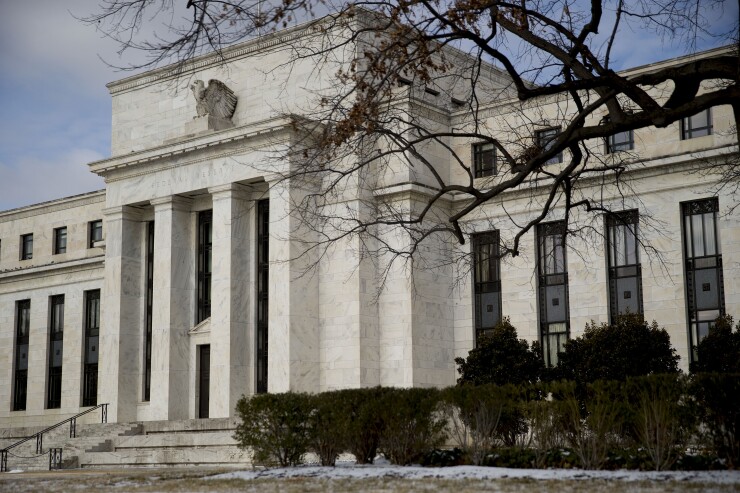Updated to include commentary and Chair Powell's remarks at press conference.
The Federal Open Market Committee cut the fed funds rate target 50 basis points to a range between 1% and 1.25%, it announced Tuesday.
While economic fundamentals “remain strong,” the panel said in a statement, “the coronavirus poses evolving risks to economic activity.”

As a result, and “in support of achieving its maximum employment and price stability goals,” the panel took the action two weeks before its next scheduled meeting.
“The Committee is closely monitoring developments and their implications for the economic outlook and will use its tools and act as appropriate to support the economy,” the statement said.
In a press conference, Federal Reserve Board Chair Jerome Powell acknowledged the move won't cure the disease or "fix broken supply chains," but said the cut gives "a meaningful boost to the economy" and lifts consumer and business confidence.
When asked what changed in the past week that prompted the FOMC to act, the chair said the "economic outlook changed materially" as a result of the virus.
"We've come to the view now that it's time to act," he said. COVID-19 has spread to more countries, but the concern for the Fed was the increased "risk to the outlook for the economy."
Although he said, "We like our current policy stance," Powell said the panel would act again if necessary. While the "economy continues to perform well," the effects on the economy from the virus are "uncertain" and "fluid."
The G-7 group of nations
That “was underwhelming and disappointed many investors,” said Robert R. Johnson, professor of finance at Heider College of Business of Creighton University. “The Federal Reserve plays a significant role in helping to bolster consumer confidence and its actions do impact the real economy due to the wealth effect. The wealth effect is a behavioral economic theory suggesting that people spend more as the value of their assets rise. The idea is that consumers feel more financially secure and confident about their wealth when their investment portfolios increase in value.”
And while the cut “will not provide a cure for the coronavirus or help ameliorate supply chain issues,” he said, it “may help bolster the financial markets and through the wealth effect will help the underlying economy weather the (hopefully) short-term disruption caused by the coronavirus.”
The Fed cut signals “its sense of urgency getting ahead of market displeasure after there was no action” from the G-7, said Steve Skancke, chief economic advisor at Keel Point.
“The coronavirus has quickly upended global economic expansion and introduced the significant uncertainty of a possible recession,” said NAR Chief Economist Lawrence Yun. “Today’s interest rate cut is therefore an appropriate response to changing events.”
While an emergency cut was thought to be a possibility, “some believed the Fed had the luxury of waiting till the March 18th meeting before pulling the trigger,” said Edward Moya, senior market analyst at OANDA. “The Fed’s actions combined with the G-7 statement indicate we will see other central banks deliver significant rate cuts as local governments work on their respective fiscal responses.”
These types of moves “do not always have a lasting impact,” he said, adding “this one might get faded until we see a fiscal response or optimism grow on the virus front.”
“Clearly the Fed is alarmed by the risks posed directly by the coronavirus, but also indirectly via the panic that took hold of financial markets last week,” said Aberdeen Standard Investments Senior Global Economist James McCann. “If left unchecked this explosion in financial stress could have threatened the cycle. This step should provide some comfort to markets, boost borrowers and help support confidence.”
But, he added, “this is not a panacea. Cutting rates in a situation like we’re in now is a pretty blunt tool and you’d really want it to be combined with governments stepping in to act as well. But by acting now, the Fed risks giving governments all the excuse they need to sit on their hands,” McCann said.
“I think the Fed hit the panic button because of the sharp spike in demand for cash from the repo market this morning," said Bryce Doty, senior portfolio manager at Sit Fixed Income. "The Fed provided a huge record $100 billion into the overnight market and, for the first time, was still not able to fill the demand. They also injected $20 billion into the term repo market and fell way short of the huge spike in demand there as well. Term repo demand was over $70 billion. Something is seriously wrong.”





